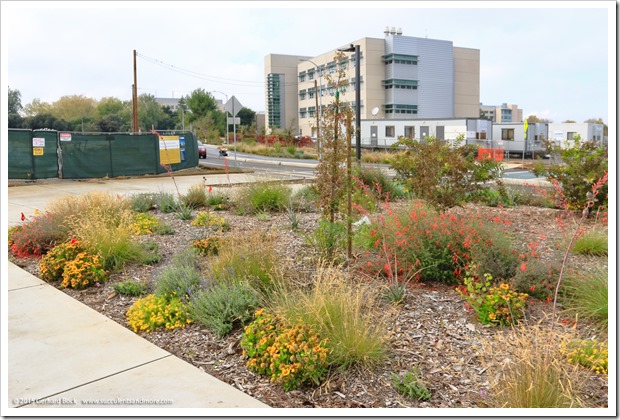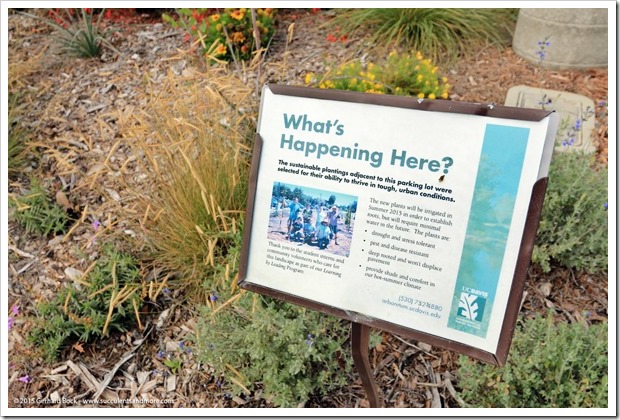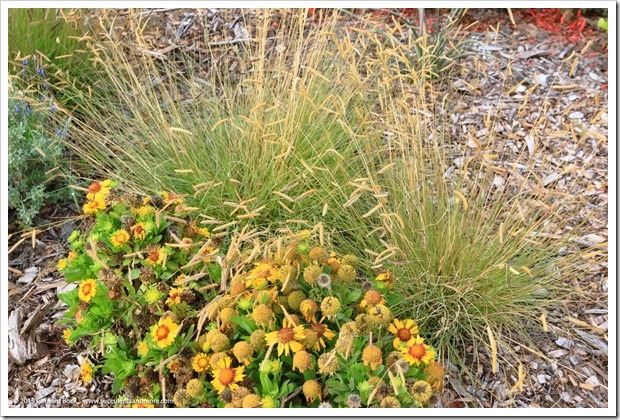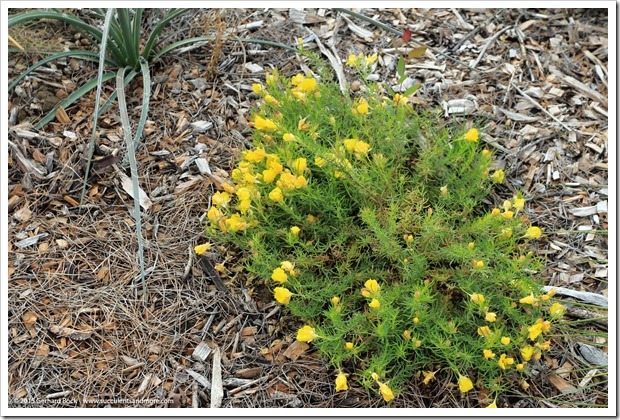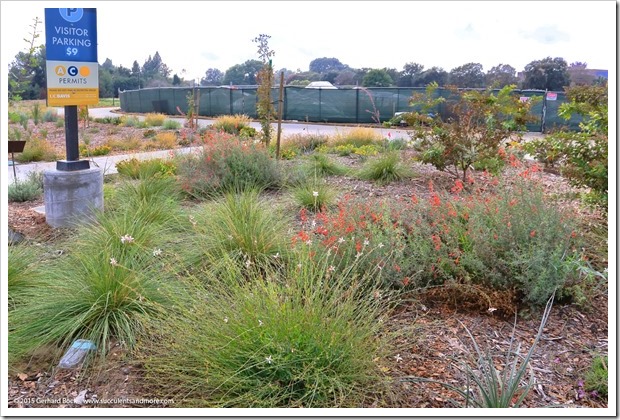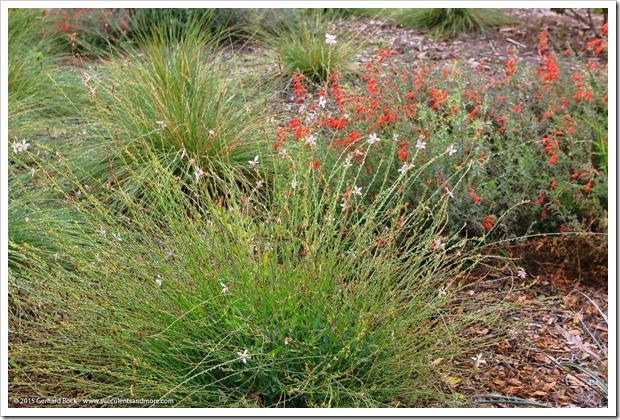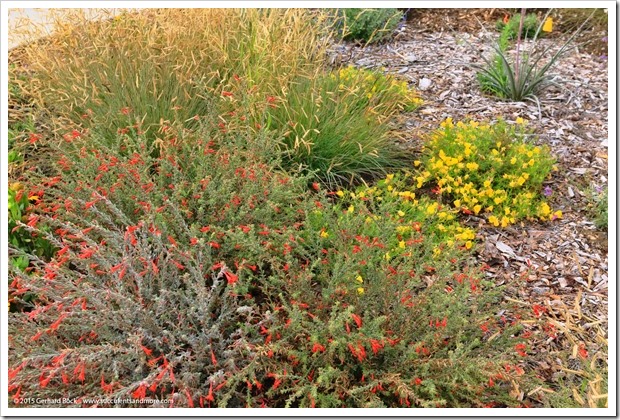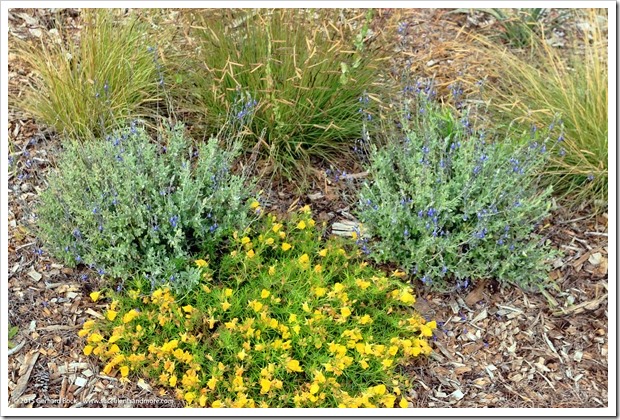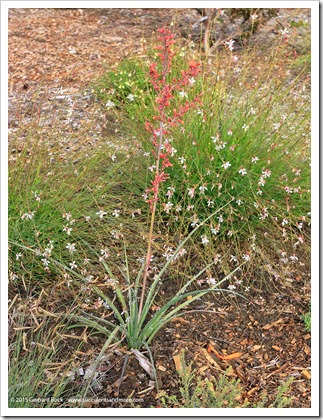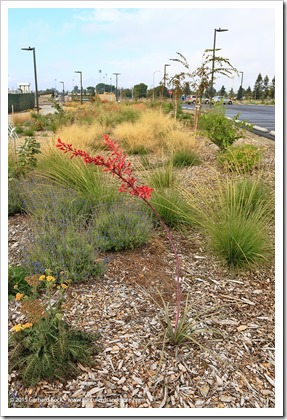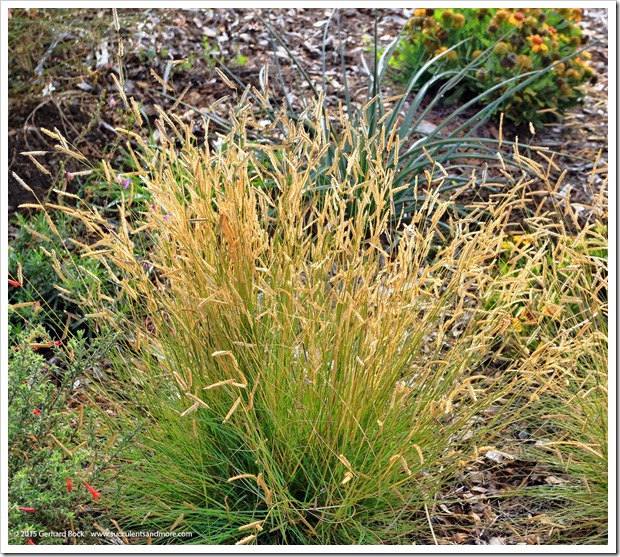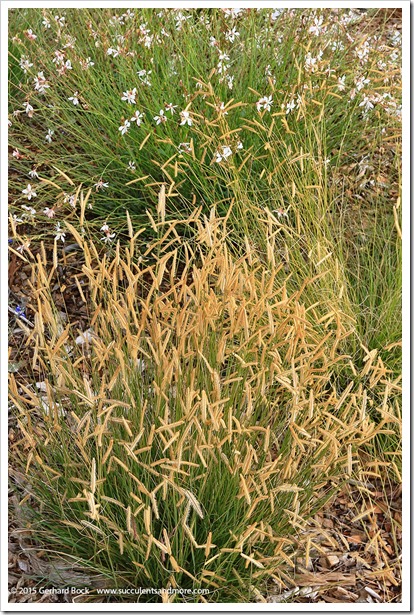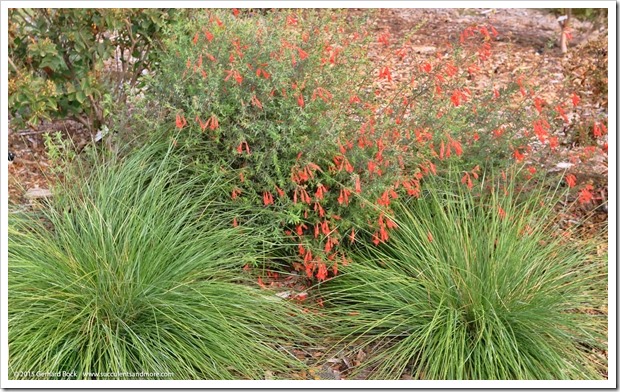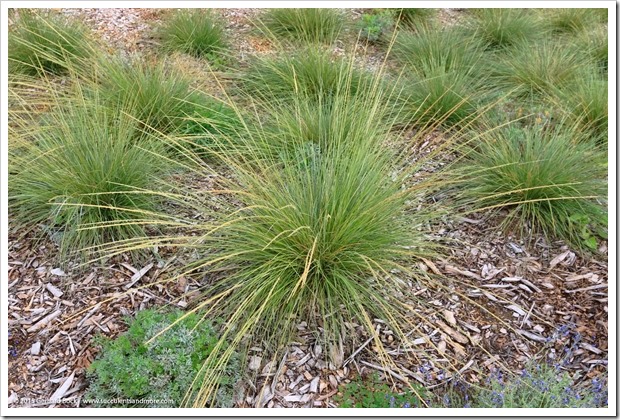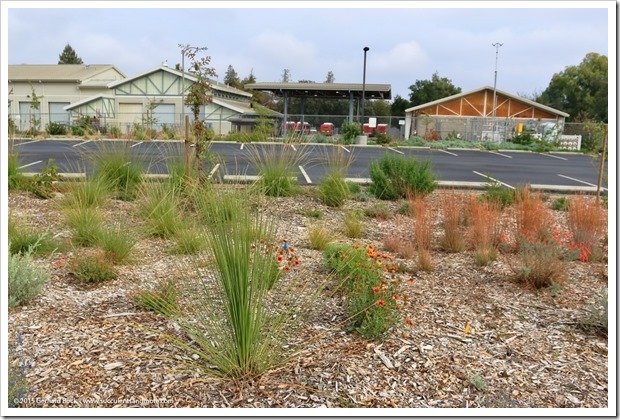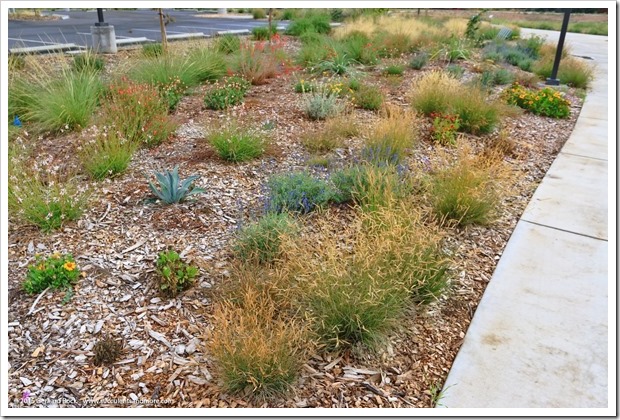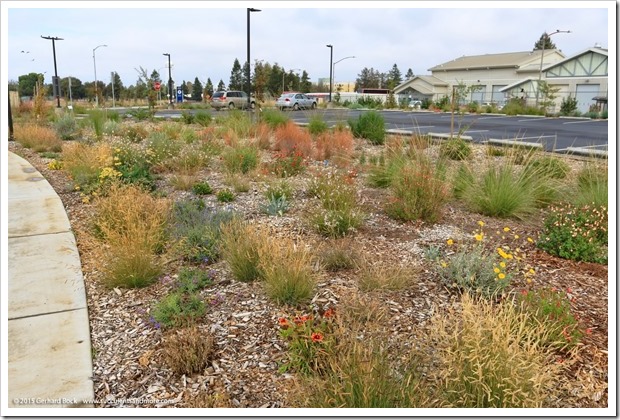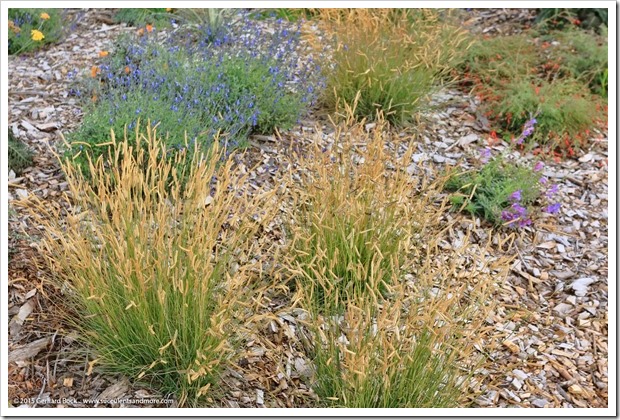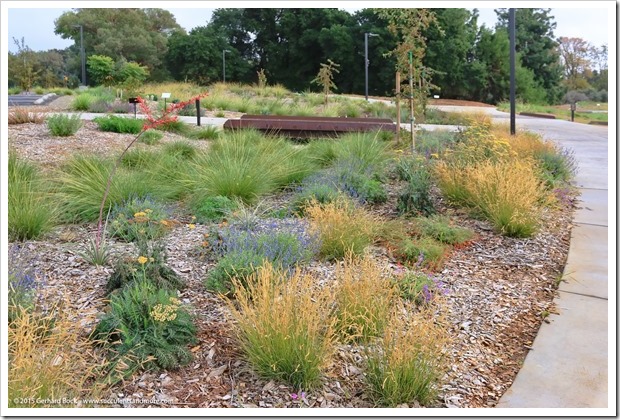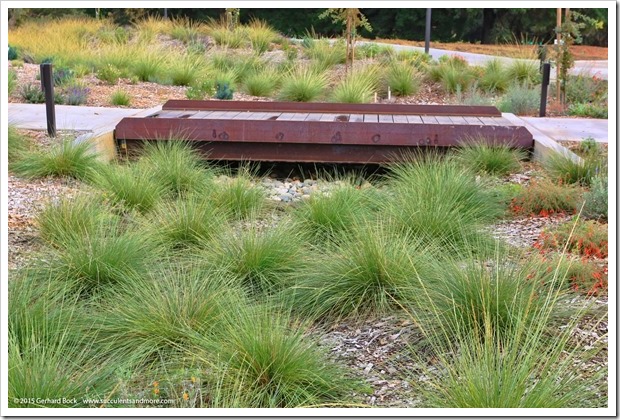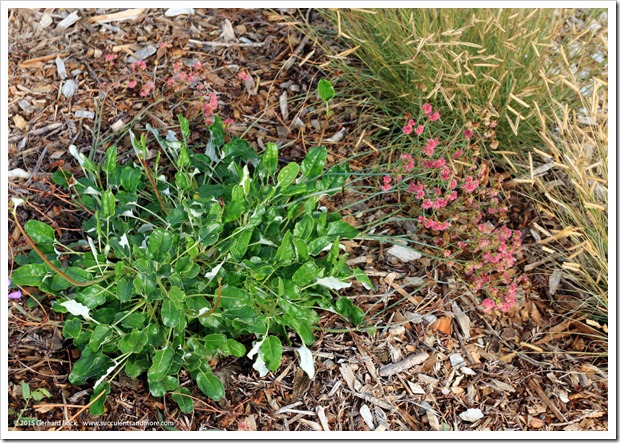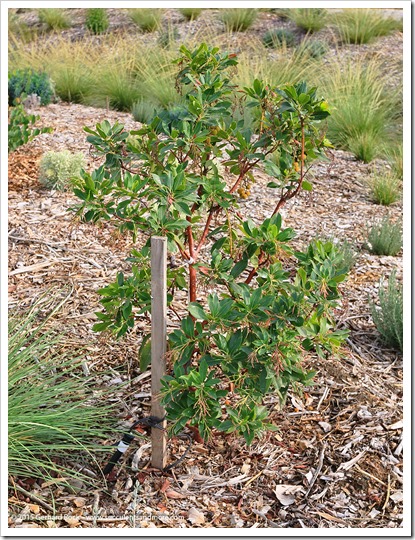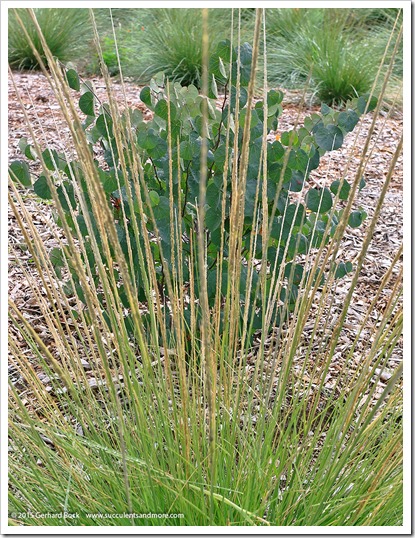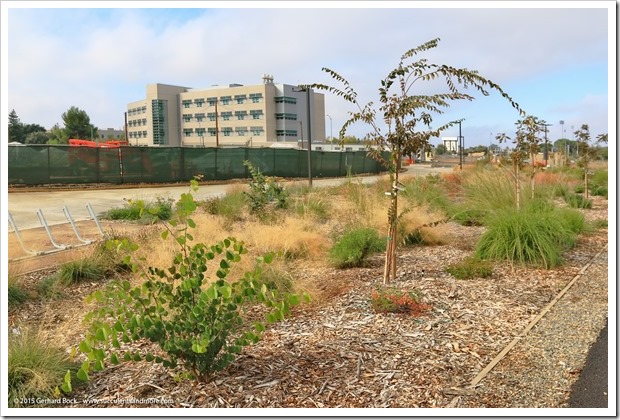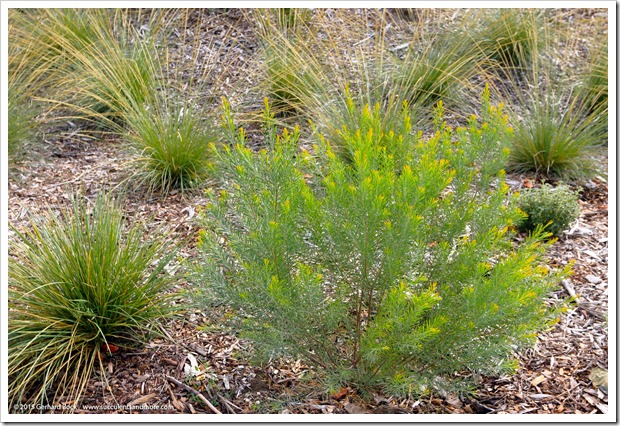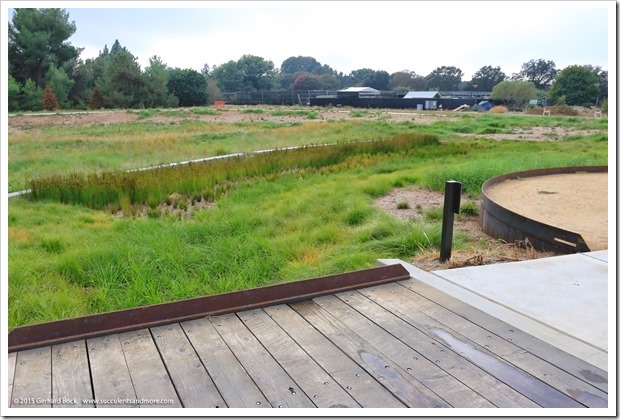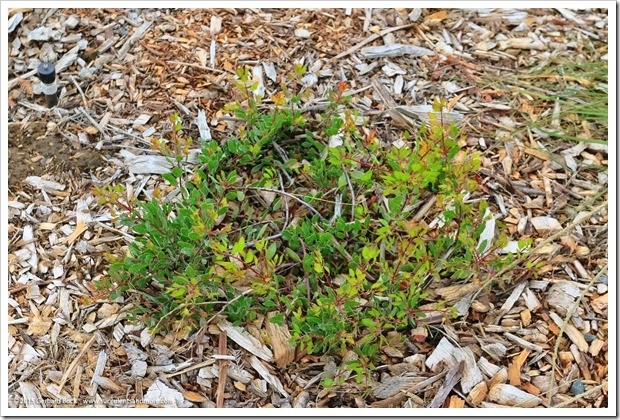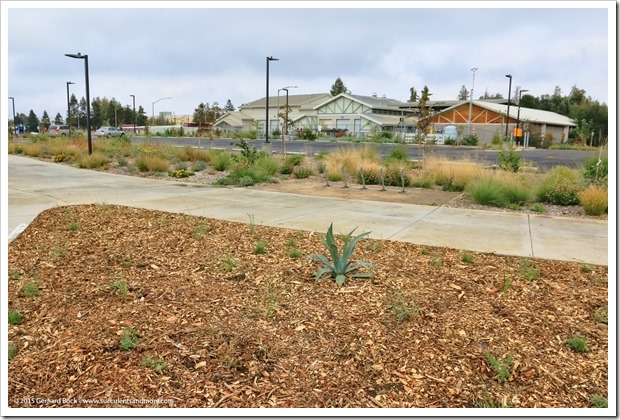On Sunday I took advantage of a break in the rain (“showers” would be more correct) to check out the fall color at the UC Davis Arboretum. That particular mission wasn’t particularly successful (we’re still a few weeks away from the ginkgos turning their brilliant yellow), but in one of those moments where you glimpse something interesting in your rear-view mirror, I ended up in the new parking lot for Putah Creek Lodge. This area didn’t exist two years ago. Now it’s a fairly large lot that serves both Putah Creek Lodge and the UC Davis Teaching Nursery where the UC Davis Arboretum plant sales are held.
Blue grama grass ( Bouteloua gracilis) and California fuchsia ( Epilobium canum)
My initial reaction was one of cursory interest; the yellows and reds I saw from the car were from the ornamental grasses and California fuchsias. But after I got out and walked around, I became more and more excited. This was no cookie-cutter public landscaping. It actually had a purpose behind it, a plan, a concept. All of the plants were either native to California or climate-appropriate, i.e. native to a region similar to ours. I find it tremendously exciting when a large organization like UC Davis puts its money where its mouth is.
While I didn’t recognize some plants in the Putah Creek parking lot, most of them are on the UC Davis Arboretum All-Stars list, “100 tough, reliable plants that have been tested in the Arboretum, are easy to grow, don’t need a lot of water, have few problems with pests or diseases, and have outstanding qualities in the garden.”
California fuchsia ( Epilobium canum)
Bear in mind that these plantings are young and need time to fill in. But there’s tremendous potential here, and I look forward to seeing what this area will look like in a year, or two.
While I wish that they used more succulents in this planting scheme, I cannot help but applaud them for their choices: all appropriate for our climate, all water-wise, and most of them attractive,
Deer grass ( Muhlenbergia rigens)
California fuchsia ( Epilobium canum)
Click the photo above to read more about this project
Deer grass ( Muhlenbergia rigens) and California fuchsia ( Epilobium canum)
Blue grama grass ( Bouteloua gracilis) and blanket flower ( Gaillardia sp.)
Blue grama grass ( Bouteloua gracilis) and germander sage ( Salvia chamaedryoides)
Dew drop ( Calylophus berlandieri)
Gaura lindheimeri and Epilobium canum
Epilobium canum and Calylophus berlandieri
Calylophus berlandieri and Salvia chamaedryoides
Red yucca ( Hesperaloe parviflora)
Blue grama grass ( Bouteloua gracilis)
Bouteloua gracilis and Gaura lindheimeri
Agave americana ssp. protoamericana ‘Lemon Lime’ and Gaura lindheimeri
Agave americana ssp. protoamericana ‘Lemon Lime’ and Bouteloua gracilis
Bouteloua gracilis
Stipa gigantea
Red buckwheat ( Eriogonum grande var. rubescens), a Southern California native
Strawberry tree ( Arbutus unedo)
Western redbud ( Cercis occidentalis) behind deer grass ( Muhlenbergia rigens)
Western redbud ( Cercis occidentalis) and valley oak ( Quercus lobatus)
Valley oak ( Quercus lobatus)
Snowy River Wattle ( Acacia boormanii)
Sign about the imporance of bioswales
Example of a bioswale
Arctostaphylos densiflora ‘Howard McMinn ’
This lone Agave americana looks completely lost. While it will form a clump over time, I still question the decision to plant it here. There are many more agave species and cultivars that are far more garden-worthy than Agave americana. It’s apparent that whoever created the planting scheme for this area knew a lot about climate-appropriate perennials but chose not to pay more attention to succulents. That, in my opinion, is a gross oversight since many succulents thrive in our climate.
Little bluestem ( Schizachyrium scoparium)




